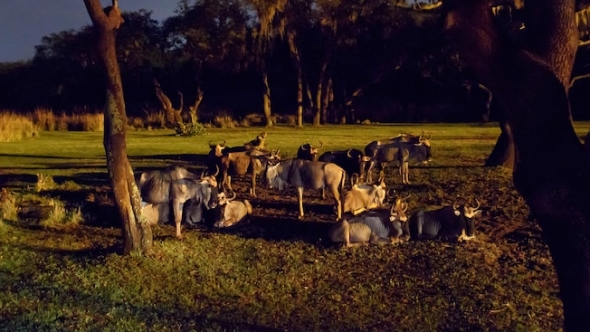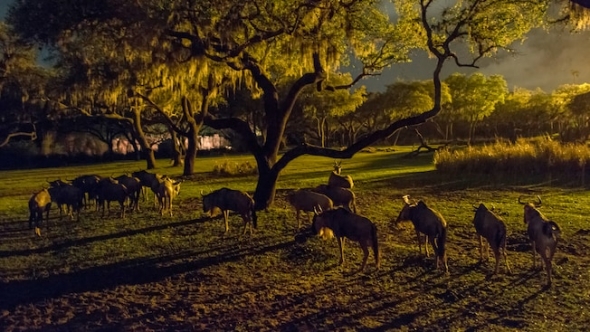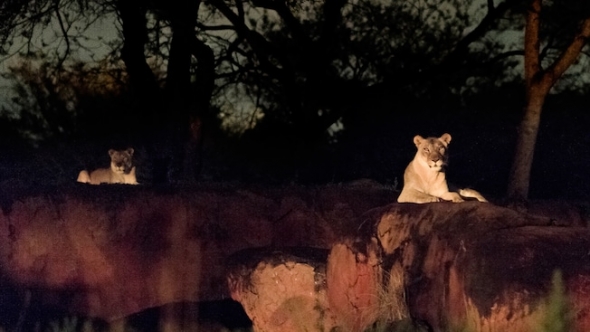The Experience: Kilimanjaro Safaris after dark
The Trick: Adding some lights and changing some behaviors
Image: DisneyWhen Animal Kingdom and Kilimanjaro Safaris opened on Earth Day in 1998, critics marveled at the triumphant nature of the ride experience. Guests could see how animals lived, safely and pleasantly. Disney had even negated the natural odors of life on the safari, making the entire fake safari experience less smelly than the real thing. The one regret everyone had was the ride closed at night.
Imagineers had a reasonable justification for this choice. Many of the animals require special treatments that are difficult to administer in their natural habitats. The zookeepers requested shelters for the caretaking of various creatures. To assure daily health checks, cast members trained their animal charges a special way. They musically signaled each species to head to its assigned overnight residence. A duck call meant it was time for the gazelles to move, the drums triggered an elephant charge, and so forth. It was a nightly exodus from the savannas to the safer parts of the park.
Image: DisneyIn 2015, Disney finally decided to extend the hours at Animal Kingdom. They simultaneously turned Kilimanjaro Safaris into a dark ride but not the standard Disney kind. Imagineers added lights throughout their human-crafted jungle, which wasn’t that hard to do. After all, much of what you see at Kilimanjaro Safaris is already artificial. Many of the structures have concrete bases, but you can’t tell due to clever paint jobs and the usual Disney themed touches.
The primary change was in animal behavior. A belief persists that the best time to ride Kilimanjaro Safaris is first thing in the morning when the creatures are up and stirring for the first time. To keep the evening version interesting for riders, Disney had to view their creatures in a new light, figuratively and literally. They had to illuminate the animals in a way that didn’t frighten or disrupt the creatures. Also, they had to persuade animals to suddenly change their lifestyles and daily routines.
Image: DisneyUltimately, Disney altered the ride path for the nighttime version of the attraction. Some animals simply weren’t going to become nocturnal, even if their zookeepers nudged them down that path. The altered rules for the evening ride reward the animals who are willing to put on a show, though. Disney prevents guests from using flash photography at night, protecting the eyes of its creatures. The drivers compensate for the change by spending more time at each spot, giving riders a better opportunity to spot various creatures in the dark. And the animals get special treats out of feeders as a bonus for staying up past their bedtime.
Given the above, you now understand why Kilimanjaro Safaris is such a hallmark achievement in theme park construction. From swampland, Disney constructed natural habitats for dozens of species. Then, they persuaded these creatures to feel comfortable around humans. Finally, they even convinced a few animals to change their sleeping patterns. It’s exactly the sort of Imagineering feat that would have made Walt Disney beam with pride.




Add new comment